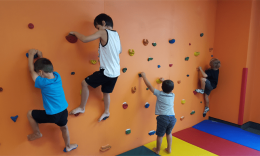Assessing Child Safety – Now is the time!

With the recent changes due to COVID-19 and organizations beginning the planning process to reopen, now is the time to do a child safety assessment and examine the questions: “Is my organization as safe as it can be? What does child safety look like in this new normal?
Families expect a child and youth-focused organization to be a safe place to leave their children. That, coupled with higher family expectations, broader safety requirements, and added liability, organizations are seeking to do more to improve safety.
A New Rhythm
As families begin to return, there may be levels of uncertainty as they work to find a new rhythm of re-engaging after isolation. Nevertheless, the one constant that will be top of mind is child safety. Here are points to consider when assessing your safety plan.
When you first return, for families, staff, volunteers, and leadership, consider a weekly communication strategy via email, text, Zoom, or on social media. For the first three months, use a communication calendar to schedule each outgoing message, which is helpful to keep your thoughts in order and make sure each group is receiving relevant information. Split up the days, if possible, as this will give you time to reply promptly.
- Training –
Consider an updated onboarding process for staff, volunteers, and new and returning families. Sharing information helps to connect and reveal areas of opportunity to increase program knowledge, review safety guidelines, establish the check-in and out procedures, and continually update everyone on changes.
If you’ve never connected or even thought about utilizing your organization’s security resources, now is a good time to do so. Security teams are a helpful buffer with volatile situations and can step in when confrontation arises. Introduce yourself to the security team lead, share your thoughts on partnering. If you don’t have a security team, speak with your leadership peers on starting one.
- Child Protection Policy (CPP) –
The primary purpose of a CPP is to create a safe environment, and operating without one is never a good idea! A CPP is a “set of self-imposed guidelines that describe how an organization intends to protect and care for the children they serve.” For information on writing a CPP or updating an existing one, click on the associated link to see a three-part series.
It is comprised of 2-5 people who seek to create a safe environment for children by developing, updating, or implementing the Children Protection Policy. By establishing a committee, it removes the responsibility of just one person to improve child safety and requires the support of leadership and management at all levels.
The check-in and out procedures have many safety benefits and range from the use of pen and paper to an electronic touchless system or a dedicated check-in area. Regardless of what process you use, customer Dee Cobia at Vintage Church Los Angeles explains, “Children’s check-in is the front door to your organization and has a huge impact on a new family’s decision to return. Directors need to know that people don’t typically return if they’ve had a bad check-in experience. It’s a deal-breaker.”
It is a crucial function that attracts people who understand the essential role it plays in helping to keep kids safe and sets the foundation for success. A comprehensive screening process acts as a deterrent of offenders, allows a multi-dimensional view of those gaining access to children, eliminates easy access to children, and establishes due diligence. Now is the time to look at how you evaluate those closest to children.
- Annual Family Survey (children included) –
The survey should be focused on evaluating child safety. It’s an excellent opportunity to learn what’s working well and the ways your organization can improve. It shouldn’t be more than 5-10 minutes long and should include a part for children to give feedback, share their experiences, and observations. The benefits of doing a survey include opening the lines of communication with parents and children and helps to understand the family perception of child safety.
The key to utilizing technology in your organization is to do so to solve issues, increase efficiency, and free up time to connect with families. An example is using KidCheck Express Check-In, where family’s check-in their children on their mobile device, which not only saves time, but is basically touchless check-in with no need to use a check-in station or stand in line, making social distancing, and germ management easier.
Whether you look at a single element of interest in your safety plan or choose to tackle multiple ones, we encourage you to give special attention to the categories that pertain to helping families transition back to being onsite and provide peace of mind.
Click here to learn about the benefits of secure children’s check-in. For more safety tips, best practices, and original content join our growing social community. You can find us on Twitter, Facebook, Pinterest, and Instagram.


